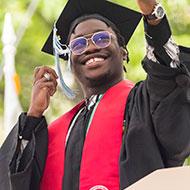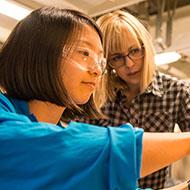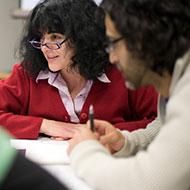What you need to know
The Education Innovation Funds for Teaching and Learning (formerly Alumni Class Funds) support projects for undergraduate education that promote excellence and improve teaching and learning at MIT. We are especially interested in proposals that make a novel or creative contribution to MIT’s educational excellence, test ideas about effective education including ways in which innovative pedagogies can facilitate learning and teaching within the MIT residential educational system, demonstrate the special and specific value of a residentially based education, or improve student-faculty engagement and/or student self-efficacy.
What you need to do
- Review details below or download proposal guidelines in PDF format.
- Send your complete application as one PDF file — including a cover sheet, proposal narrative, project budget, and letters of support — to eifunds@mit.edu by Friday, February 28, 2025.
- Our staff will confirm receipt of your proposal by email.
- The selection committee typically meets in the spring, and you will receive a decision letter by email before the end of the term.
- All grant recipients are required to submit a report at the end of their funding cycle.
Who can apply
- The Education Innovation Funds are open to MIT faculty and teaching staff.
- Student proposals are considered with the support of a supervising faculty sponsor and the appropriate department head.
- Projects can come from any discipline as well as collaborations among disciplines.
Grant use and size
- Funds are available for use from July 2025 through June 2026.
- Normally, grants range from $10,000 and $50,000. Though unusual, larger awards may be considered for special projects. Regardless of the amount requested, costs must be substantiated in your budget and grants are to be used during the stated funding period.
- Your request may include faculty summer salary and EB, UROPs, materials/books, and some equipment.
- Funding is not typically approved for overhead, teaching release, conference or travel expenses, graduate student tuition, honoraria, guest travel or lodging, or RA positions.
- Projects that utilize funding from departments or other sources are highly encouraged and looked favorably upon by the selection committee.
- Proposals for multi-year projects are accepted, but grants are awarded on a year-by-year basis.
To apply
Only proposals including all of the following elements will be accepted:
- A cover sheet.
- A proposal narrative (3-6 pages) that includes:
- A detailed description of the project that is understandable to people in other fields.
- A description of your educational objectives with answers to the following questions:
- How will the project enhance your teaching?
- How will it improve students' experiences in the classroom?
- What is the potential impact of the project at MIT? Estimate number of students served now and in the future.
- Description of resources and staffing needed.
- An assessment plan including a description of how you will reflect upon the efficacy of your educational innovation.
- A project budget including:
- a detailed breakdown of costs for materials and staffing,
- cost of TLL assessment services, if applicable,
- other funding sources such as support from your department or school, and
- a narrative explaining how you arrived at these specific costs.
- Letter(s) of support from the relevant department, program, or section head(s). Letters should address financial support from the department, how the project fits into the departmental curriculum, and plans to sustain the project after support from the Education Innovation Funds ends.
- Updates on projects previously funded by Education Innovation Funds (Alumni Class Funds), if applicable.
- If you received previous funding for a related project, include an update on the efforts to date and clearly describe the new innovation for the next phase of that project for which you seek funding.
- If you received previous funding for an unrelated project, briefly describe your project and the outcomes as they relate to teaching and learning and submit any outstanding final reports.





